Is it time we gave nuclear power another chance?
By Daniel Cooper From engadget
Clean, green and capable of powering an energy-hungry future… right?

50 parts per million. That’s the figure scientists agree is the “safe” upper limit of carbon dioxide in our atmosphere. Beyond that point, it’s increasingly likely that our planet will become inhospitable for the humans that cling to its surface. Crops will fail, sea levels will rise and millions, if not billions, will die in catastrophic weather events. The National Oceanic and Atmospheric Administration’s Mauna Loa Observatory reports that levels have now reached 409.9 parts per million.
Thanks to our ceaseless desire for more power, that number isn’t going to shrink any time soon. The International Energy Agency’s 2018 report found our energy demand has risen by 2.3 percent, the highest rise in a decade. Unfortunately, much of that demand was met by burning more fossil fuels, releasing even more CO2 into the atmosphere.
The hope is that the global economy can transition to carbon-free sources of energy before catastrophe strikes. There is another fuel technology that we already know works; one which offers a potentially limitless supply of low-carbon energy. It’s cheap, certainly in the long term, and could radically reshape the way that we think about power, on paper, at least. For a variety of reasons, nuclear power has been benched and is currently contributing a lot less than it could to our global energy needs. Is it time we gave nuclear energy another shot?
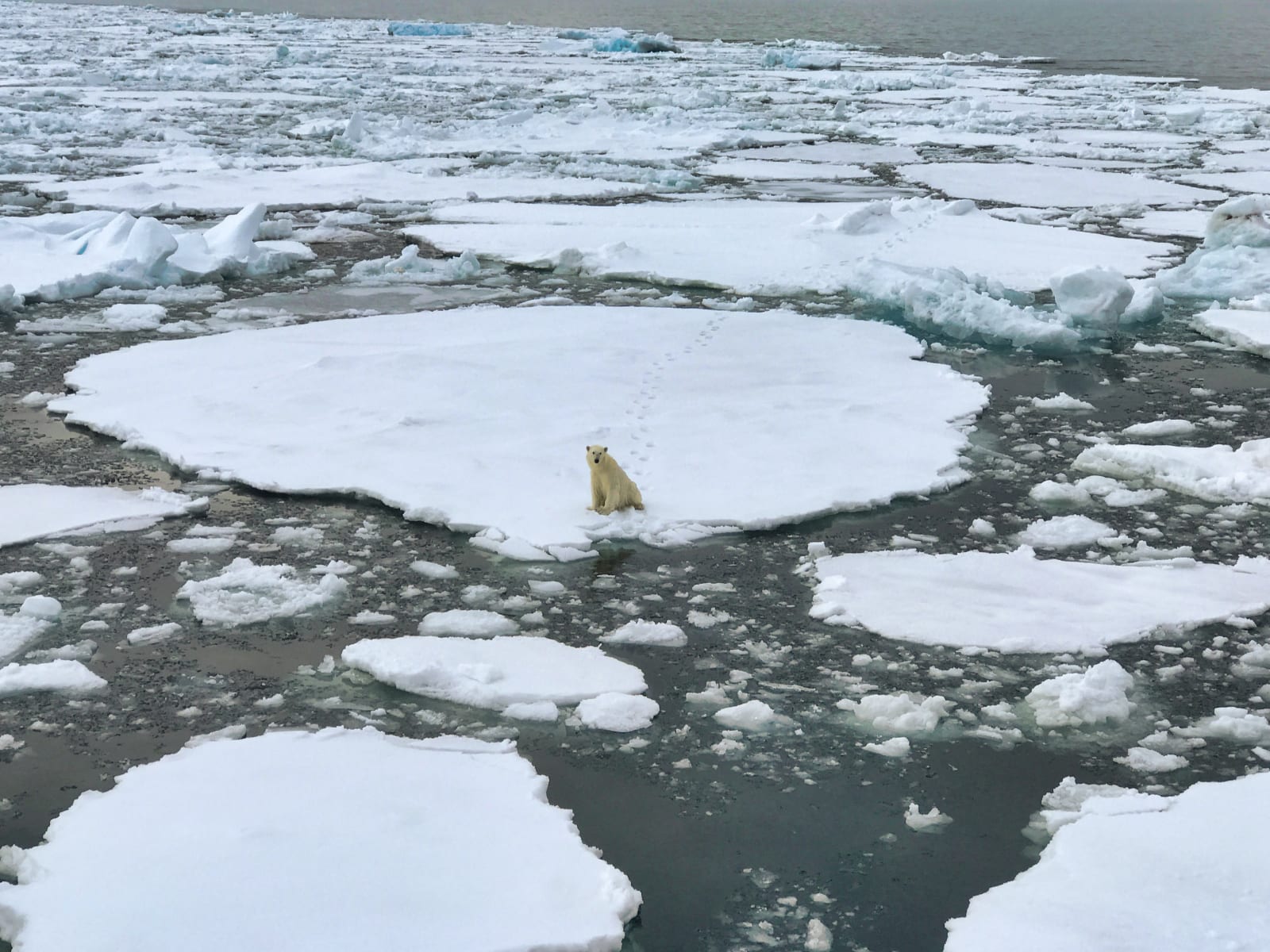
Our fault
Nuclear energy currently produces around 11 percent of the world’s power, all of which is classified as “low-carbon energy.” There are around 450 reactors in operation across 30 countries, with France being the most enthusiastic user of the technology. Several people have recently made the case for nuclear to be hauled off the bench and put back into service. Bill Gates, who has invested in nuclear startups, has lobbied congress to fund experiments in new nuclear energy. Soon after, three notable academics published a New York Times editorial titled “Nuclear Power Can Save The World.”
Their thesis, put simply, is that renewables are expensive and cannot yet be relied upon to deliver energy 24/7. The trio says that, in Germany, despite large investment in renewables, the country’s carbon emissions have yet to fall. And while other options, like hydroelectricity and geothermal, have their place, they are closely tied to favorable local geographies. If we are to save the world then we need to convert everything we use to electricity, rather than other fuel sources, and start building a fleet of nuclear reactors.
What is nuclear power?
“Our world is made of atoms,” explained Katie Mummah, a nuclear engineer at the University of Wisconsin, which are some of “the smallest building blocks of matter.” Elements at the bottom of the periodic table are chock-full of atoms and neutrons, which makes them both heavy and unstable. “If you take a neutron and hit [one of these unstable elements], your atom can break apart, which is better known as fission,” she added.
Breaking apart an atom releases an enormous amount of energy, and you get out far more energy out of broken atoms than you spend breaking them. That makes it ideal for use as a power source, since you can use relatively small quantities to generate quite a large amount of electricity.
This process is relatively simple because we have an abundant supply of raw material that can be processed for fission. Place a large quantity of an unstable element, like uranium 235, next to a source of “slow” neutrons, and you’ll get a chain reaction of energy. It’s not a perpetual motion machine, but the chain reaction inside nuclear fission becomes self-perpetuating until the fuel expires.
There are other efficiencies that nuclear energy offers compared to other sources of power, including its (relative) size. “A commercial reactor here in the US,” said Mummah, “has a cylinder about 12 feet tall and 12 feet in diameter, producing enough energy for around a million homes.” Mummah says that there is enough uranium available to satisfy Earth’s energy needs for several centuries.Light-water reactors explainedClick Here
The first benefit of nuclear power is its sheer energy density, said Katie Mummah, especially given the demands of domestic homes. In the US, theEnergy Information Administration says the average home consumed 10,399kWh of power in 2017. To generate that much energy, you’d need to burn slightly less than a ton of crude oil, or its equivalent. By comparison, a single kilogram of enriched uranium in a nuclear reactor will generate enough energy to power 104 homes for a year. With a ton of the stuff, you can power more than 104,000 homes for a year. America’s largest nuclear plant, Palo Verde in Arizona, has a maximum output of 3,937MW, enough power to, it’s claimed, supply energy to more than four million people.
“Nuclear plants are expensive to build but relatively cheap to run,” says theWorld Nuclear Association, which represents the industry. “Once a nuclear plant has been constructed, the production cost of electricity is low and predictably stable,” it adds. The atomic age was predicated on the promise of unlimited energy, constantly available, which could be used to power pretty much everything. Sadly, the high cost of construction (and the cheap energy) dissuades investors from putting money in since there’s little guarantee of making their money back.
Clean and cheap energy should be a goal of every country, especially in a future where energy demand is expected to rise. And it’s worth adding that the price of nuclear power includes the cost of building and running the plant, as well as disposing of its waste products. Compare that to, say, a coal plant, where the environmental cost of its emissions are not part of the initial price, and the figures are unfairly skewed. Given the enormous toll of climate change, it’s likely that, overall, nuclear energy is far cheaper.
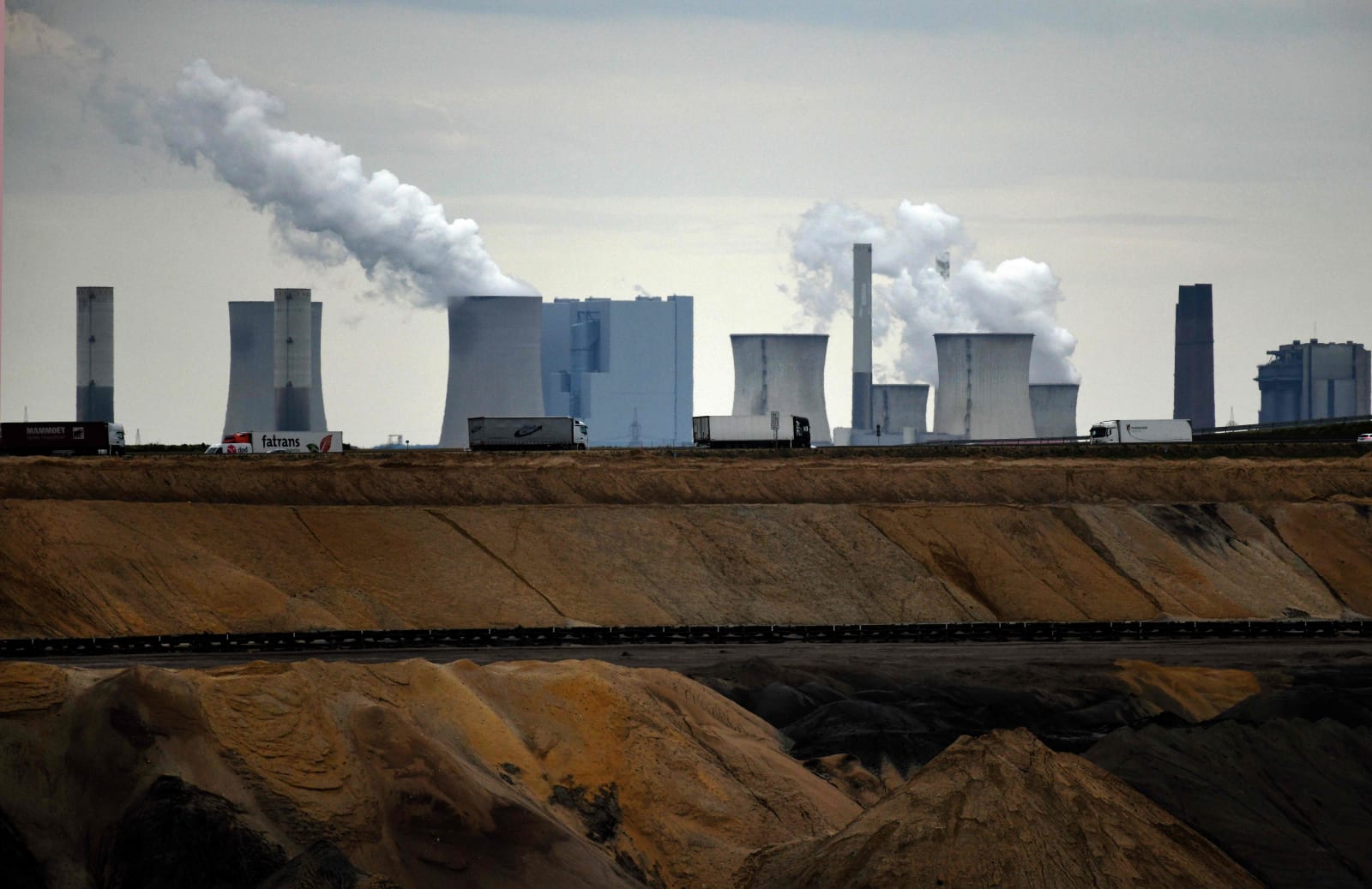
A German coal-fired plant looms over an open-cast mine.
Over the last four decades, three of Europe’s major economies have serendipitously played out a large-scale experiment in the benefits of nuclear power. France and the UK have similarly sized populations and economies, while Germany is proportionally larger. All three are neighbors in northern Europe, with roughly similar climates and are, for now, generally regarded as the “big three” countries in the EU.
If there is one difference, it’s that each country adopted a different energy source as the basis for their electricity generation. This is, admittedly, a generalization, but Germany opted for coal, the UK chose gas, and France went in hard for nuclear. Look at data from the World Bank, and you can see how these energy policies impacted their carbon emissions from the 1970s until very recently.
In 1973, France and the UK emitted 9.667 and 11.746 metric tons of CO2 per capita, respectively, shortly before France began its transition to nuclear. By 2014, France’s emissions had fallen by 52 percent, but the UK’s had only dropped by 45 percent. Germany, which only started reporting post-reunification and has been far slower to decarbonize, has only fallen 24 percent since 1991.
The US Department of Energy’s facility at Oak Ridge National Laboratory pointed out the obvious link between France’s lower emissions and its pro-nuclear stance. A 2011 report said that “extensive use of nuclear power has clearly curtailed fossil-fuel-related CO2 emissions from France.” In 2017, French President Emmanuel Macron affirmed his commitment to nuclear energy as a vehicle for decarbonization.
One tentpole argument against renewable energy is that power runs out on days when it isn’t sunny or windy, making it incapable of delivering base-load power. That’s the energy you can, and should, rely on being available 24/7, come rain or shine. Renewables’ intermittency is only partially true because a grid that mixes various energies will likely be able to switch between technology depending on supply. And work is continuing on developing cheaper, denser and more environmentally friendly batteries to level out intermittent supplies. Tesla has built “big batteries” in Australia and Hawaii, among other places, to store energy from renewable sources.
But batteries cost money, which can increase the price of renewable energy over that from fossil sources. Nuclear power could be used in their place, offering this base-load power to ensure the supply never runs out when renewables can’t keep up with demand. “[Nuclear] produces power basically 24/7,” said Mummah, “not only are you producing power for a million homes, you’re producing that level constantly.”
There are plenty of downsides to nuclear power as well, and it’s never been clear if the gains are more persuasive than the losses. Every energy source has its own problems: Burn fossil fuels and you’ll get heat, which we can harness, and toxic materials released into the atmosphere, which we can’t. Renewable equipment, like solar panels and batteries, will degrade the longer they are in use, even if it takes decades to get there.
Nuclear power is no different. Nuclear fission creates fission products, everything left of the original fuel after the reaction has subsided. Because these elements, like uranium, have had their atoms smashed around, it’s not uranium anymore, but any number of elements from the periodic table. The one constant is that the material is highly radioactive, and it needs to be stored safely until its radioactivity can subside.
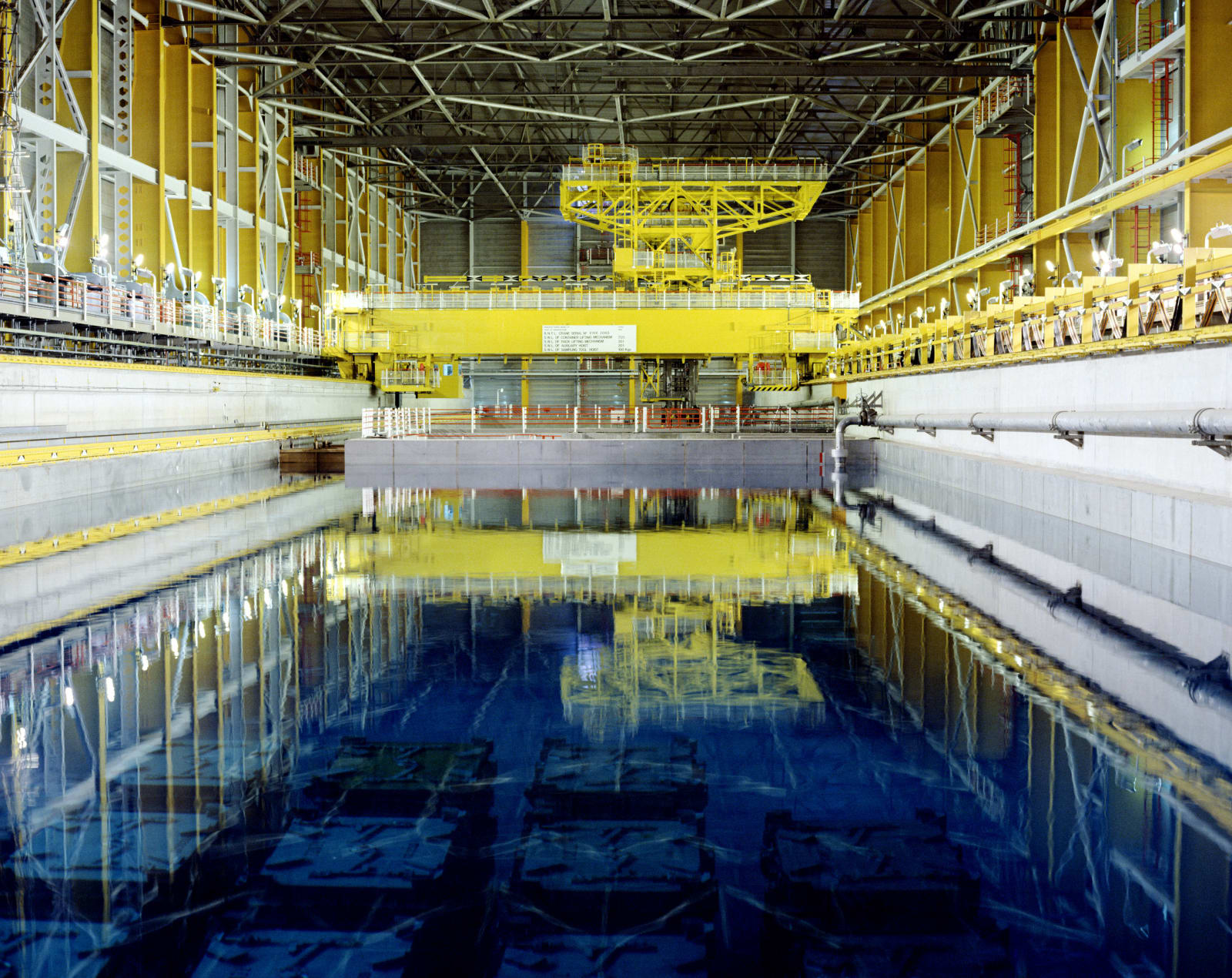
A nuclear storage pond in which “used” fuel rods are kept under water.
Storing nuclear waste essentially means immersing it in water until it has become less lethal, then burying it in concrete. “There are other ways to do this,” explained Dr. Sarah Jordaan, “but there has still yet to be a robust plan implemented, especially in the US.” The issue, domestically, is thatthe US has 90,000 tons of nuclear waste, enough to fill a football field about 20 meters deep. But the country has never come close to identifying a single disposal or long-term storage facility.
In the interim, the Yucca Mountain complex in Nevada was used to house a large quantity of this material, but that’s not a permanent solution. Katie Mummah feels there’s no need to bother, since “most of the material is still usable, but we don’t do [recycling of nuclear waste] in the US.” That would require the fission products to be chemically treated to separate them out, recovering usable uranium for use in the reactor. Waste reprocessing is possible; although it is only carried out in France, the UK, Russia and Japan (in the near future), in very small quantities.
Pete Wilkinson is an environmentalist and co-founder of Greenpeace UK, who sat on the UK’s Committee on Radioactive Waste Management. “We reported in 2007 and said that there were only two ways of dealing with radioactive waste, neither of which were satisfactory.” The panel found you can either store the fission products or dispose of them, with disposal being the “least-worst option.” But, Wilkinson adds, “the problems with disposal are legion,” and many of them are “show stopping.”
In the UK, “We have 500,000 cubic meters of radioactive waste,” says Wilkinson “a small proportion of it is going to be lethal for 250,000 years.” The concern is “new build waste will be far hotter and far more radioactive than the waste we currently have.” This would make storage sites a risk for natural disasters, as well as nefarious types looking to acquire dangerous materials.
The arguments against nuclear power often go hand-in-hand with those against nuclear weapons. Any country with the ability to enrich uranium and plutonium for energy production can, inevitably, also do the same to create weapons. “[Nuclear] technology can enable higher levels of weapons-grade plutonium,” says Dr. Sarah Jordaan, “although that has been addressed in various non-proliferation treaties.” Dr Jordaan is assistant professor of Energy, Resources and Environment at the Johns Hopkins School of Advanced International Studies, Washington DC.
The UN Treaty on the Nonproliferation of Nuclear Weapons was opened in 1968 and came into force two years later. It stipulates that countries, 191 of which are signatories, do not create new nuclear weapons, but work together to promote peaceful uses of nuclear energy. But those countries that still have weapons technology, including the US and UK, are able to refresh their own stocks of these weapons. Pete Wilkinson feels that the driving force behind a push for new nuclear power is to keep “the experience alive in the workforce because [the UK] has to renew Trident,” the country’s nuclear deterrent.
Nuclear reactors are big, expensive and complex pieces of infrastructure, which is something many Western nations are struggling to build. In the US, for instance, building just a mile of subway in New York costs $3.5 billion and takes years as political will and money for these enterprises fade. “The US has lost its ability to build big infrastructure projects,” says Mummah, “we’re struggling with the economics to do this quickly and cheaply.” There’s also the risk that, because nuclear power has often fallen in and out of favor, there is less will for advocates and policymakers to push for it.
Dr. Sarah Jordaan says that the research into making nuclear power economically viable is “increasingly unfavorable.” In the UK, the new Hinkley Point C power station, currently under construction, is expected to cost up to £20.3 billion ($26.5 billion). In addition, the UK government agreed a high strike price — a form of guaranteed payment should energy costs fall. This price is £92.50 ($120) per MWh, and if energy falls below that cost, consumers will pay the top-up.
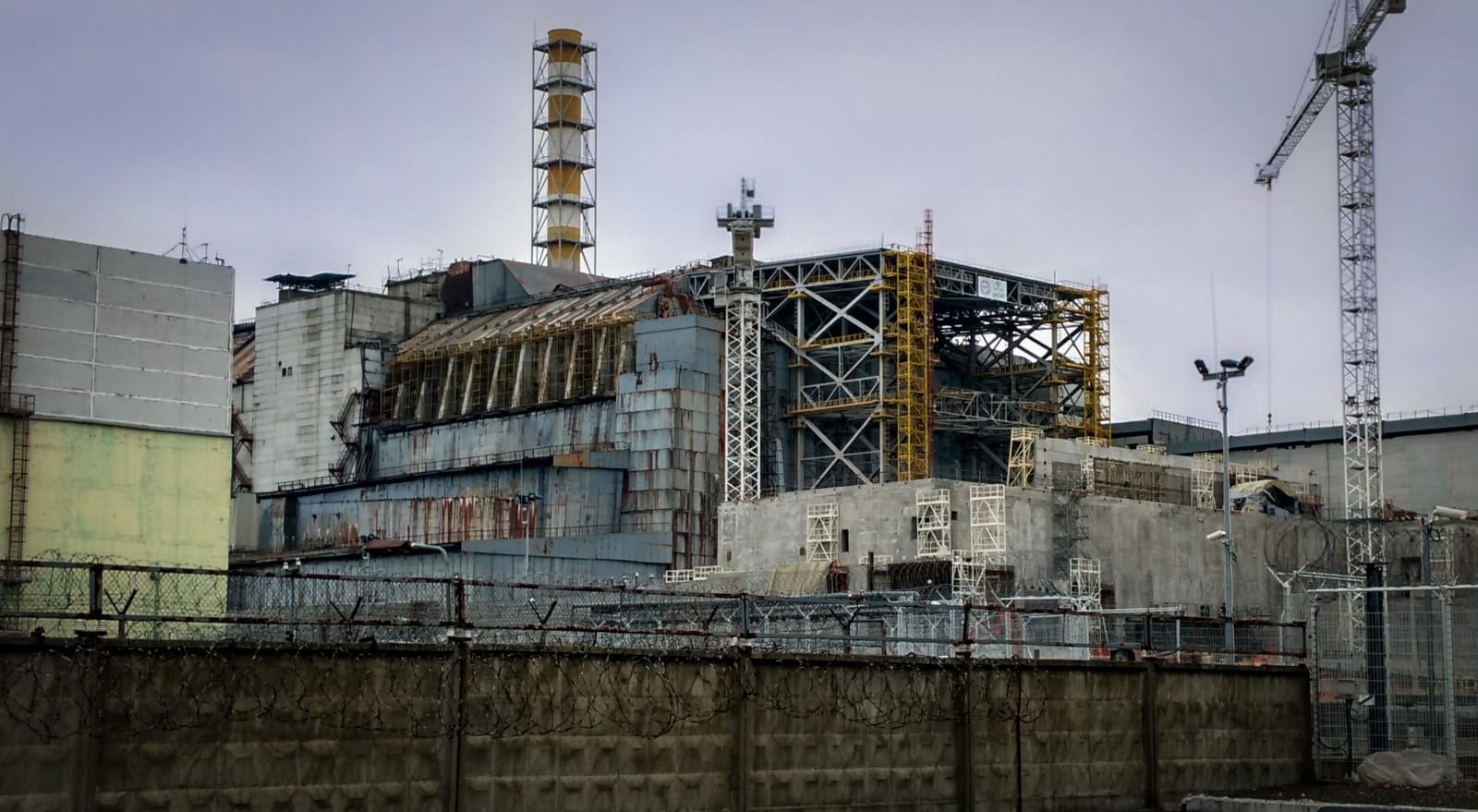
The ruins of reactor 4 at Chernobyl, 2016
Windscale. Three Mile Island. Chernobyl. Fukushima. The major nuclear-power accidents in the UK, US, Russia and Japan are all infamous. Their names are burned on to our collective memories as shorthand for a massive disaster that cost the lives of countless people. No discussion of nuclear power can take place without reference to the accidents, both large and small. And Chernobyl will, once again, be in the news, as it’s the center of a new HBO miniseries starring Emily Watson and Jared Harris.
Public opinion has, however, been malleable and, in the absence of a disaster, gently trends favorably toward cleaner, greener sources of energy. In 2010, a year before Fukushima, the OECD polled people on their attitudes toward nuclear power. It found that opinions only hardened against nuclear power in the immediate aftermath of a disaster.
Researchers were interviewing Japanese people in the wake of the Tokai Mura incident, in which two people died during a radiation leak at a uranium-processing facility. Support for any nuclear power fell from 52 percent down to 32 percent, while the belief that all nuclear is unsafe rose to 78 percent.
“Countries will only be able to use nuclear energy if a well-informed public considers that its benefits outweigh its risks,” said researchers. “An opinion,” the paper added, “which is not yet widely shared in the countries polled.” But the report also found that, even in pro-nuclear countries, people felt the risks of the power far outweighed its advantages.
“There are substantial public concern questions, especially post-Fukushima,” says Dr. Jordaan. She added that the whole nuclear industry needs to deal with the issues around “economics and the management of spent fuel.” People believe that nuclear energy is dangerous, says Dr. Jordaan, and that nervousness can’t be dismissed, because public concern is a real issue.
Beyond the risks of a meltdown or other disaster, nuclear reactors are heavy pieces of infrastructure. Pete Wilkinson is currently running a group,Together Against Sizewell C (TASC). TASC’s aims are to oppose construction of a third reactor at the Sizewell complex on Britain’s Suffolk coast. “There are infringements on an area of outstanding natural beauty, road pollution, light pollution and a complete change of character in the area. It would also devastate [local nature reserve] Minsmere,” he said.
“There are a lot of people who you could accuse of being NIMBYs, (short for Not In My BackYard, a reference to people who oppose all construction near their home)” said Wilkinson, “but it’s not our position because we don’t believe that Sizewell is an appropriate site.” TASC feels that Sizewell is too small a site to build yet another nuclear reactor given that it’s based on a piece of rapidly eroding coast. “Even the [UK] environment agency agree that, within a century, Sizewell will be an island because of climate change.”
The most enduring image of the effects of nuclear power in the last thirty years could very well be Blinky, the three-eyed fish from The Simpsons. Because Springfield Nuclear Power plant is a light-water reactor, it perpetuates the notion that water nearby is irradiated. Unsubstantiated stories of three-eyed fish being pulled out of lakes by power plants all cite the supposed truth that the animated sitcom had uncovered. This all helps to push the notion that nuclear power should never be touched, immaterial of the truth.
The trailer for HBO’s Chernobyl has all of the things you’d come to expect from a series focused on nuclear power. A Geiger counter clicking, droning atonal music, abandoned brutalist buildings, people scarred with the burns of radiation sickness, bodies piled high. The most notable stories featuring nuclear power are all anti-war tracts like The Day After, Threads and When The Wind Blows. If you just believed what you saw on TV, then nuclear power is an act of environmental evil that no sane person would countenance.
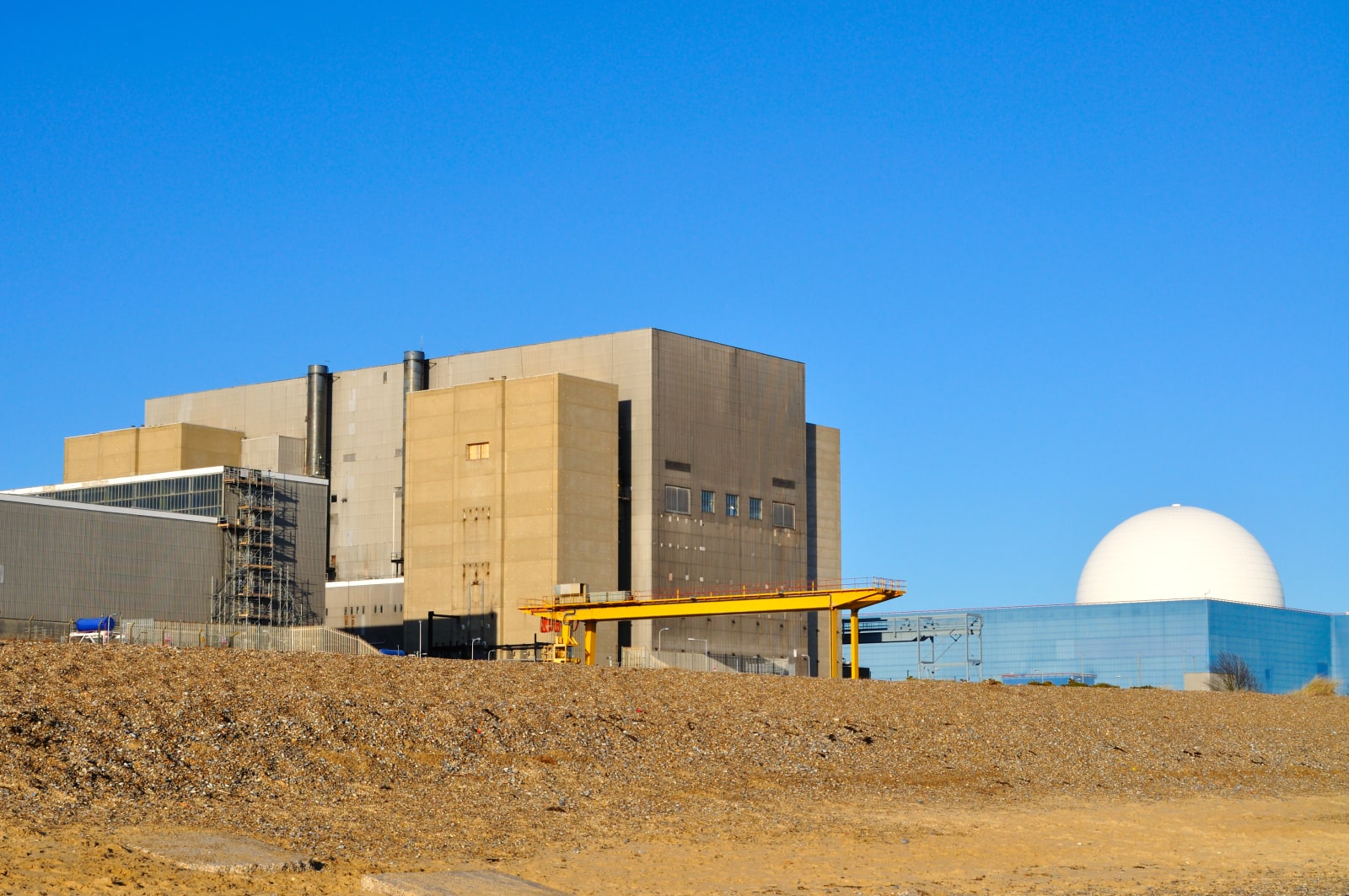
The nuclear reactors at Sizewell, on Britain’s Suffolk coastline.
Rather than simply dismissing all nuclear power out of hand, it can be instructive to understand why these disasters took place. “The first failure of Chernobyl was the design,” said engineer Katie Mummah. “They designed their reactor so that, if it heats up, the chain reaction increases,” she added, “and as it increases, you produce more heat.” Mummah says this design had the benefit of creating “more plutonium,” for Russia’s weapons ambitions. The second failure was to not build a containment building, a steel and concrete shroud around the reactor to prevent the release of hazardous matter. “If they’d had a containment building,” said Mummah, “then we wouldn’t have Chernobyl as we knew it.”
“It wasn’t one mistake that led to this, it was dozens,” said Mummah, adding that officials then indulged the whims of an engineer who wanted to test the reactor with the safety systems deactivated. In slowing, and then speeding up the reactor, the power level spiked, causing “a feedback loop.” That, in turn, caused the coolant to “flash boil,” which, coupled with a graphite fire, lofted clouds of radioactive material into the air. Due to the nature of radiation poisoning, it’s hard to get a solid idea of the number of people who died as a result of Chernobyl. Some reports put the direct death toll at under 100, but indirect deaths — caused by exposure to radiation causing aggressive cancers — are in the high thousands.
“Fukushima was another issue of design error,” explained Mummah, “but also an issue of human error.” The diesel generators, which provided backup power to the Fukushima Daiichi plant, were built underground, “at a level where, if flooding happened, it would be under water.” When a tsunami struck the plant, these backup generators were disabled or destroyed, impairing the plant’s many safety systems. If they had been sited higher, the disaster wouldn’t have played out, because the generators would have kept the reactor cool.
In addition, staff at the plant were occupied by issues with dwindling water supplies in pools used to cool used fuel rods — nuclear waste. If they had caught fire, radioactive material would have been blown over the surrounding area, potentially risking many lives. Officials then devoted attention to that over managing other dangerous elements of the disaster. “It’s something that our nuclear industry has learned a lot from,” says Mummah, “all of the reactors in the US now have tons of back-up infrastructure that is especially intended to prevent an event like Fukushima.”
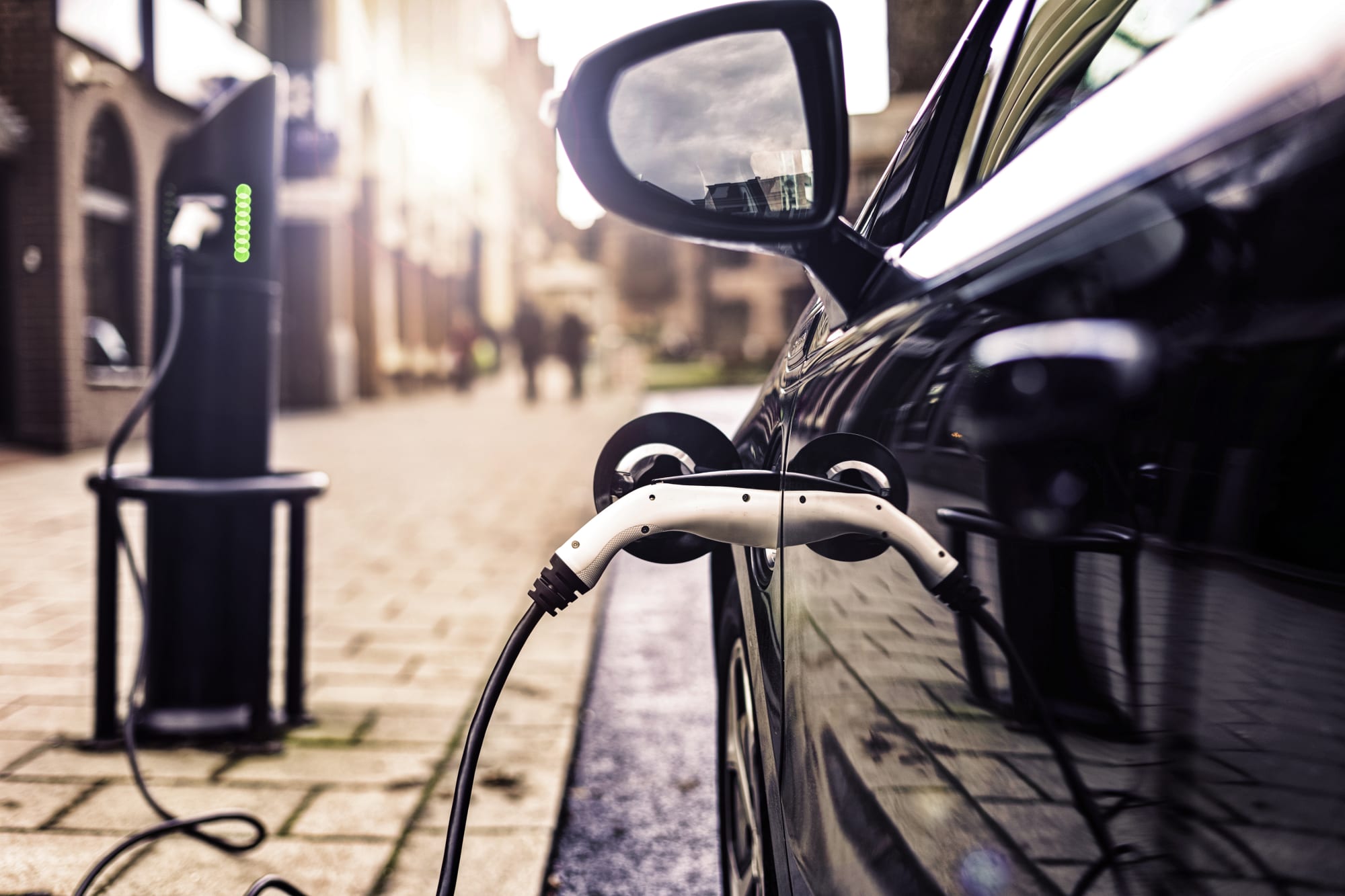
It’s not clear if the pros of nuclear power outweigh the cons, but it would help if there was some sense of what a viable alternative would look like. Rather than a “one-size-fits-all solution,” says Dr. Sarah Jordaan, “a large number of different sources,” would be the ideal future of our energy. Both Jordaan and Wilkinson talked about the need for a smart grid, which can switch between power sources based on availability. The pair also talked about the need for better efficiency measures, making all our devices sip rather than gulp at power to stop so much energy being wasted.
Of course, if there’s one thing nuclear power can do, it’s to give us a free pass on thinking about our power consumption. We can buy our electric vehicles and gigantic refrigerators without considering if there are cheaper and more efficient ways of doing things. In a nuclear world, we don’t have to plan how and when we use our devices and can leave the problems of used fuel storage to the next generation. But, if there is a reckoning coming over how we consume power, isn’t it worth doing that now?
Image Credits: Sad Polar Bear, Victim of Climate Change (Patricia Hamilton via Getty Images) German Coal Plant (Ina Fassbender via Getty Images) Nuclear Cooling Pond (Steve Allen via Getty Images) Chernobyl Reactor Four (Blinoff via Getty Images) Electric Car Charger (nrqemi via Getty Images)
Images: Patricia Hamilton via Getty (Polar Bear), Ina Fassbender via Getty (German Coal) Steve Allen via Getty (Cooling Pond) Blinoff via Getty (Chernobyl) Nrqemi via Getty (Electric Car)
For more on this story go to: https://www.engadget.com/2019/05/06/is-it-time-we-gave-nuclear-power-another-chance/




